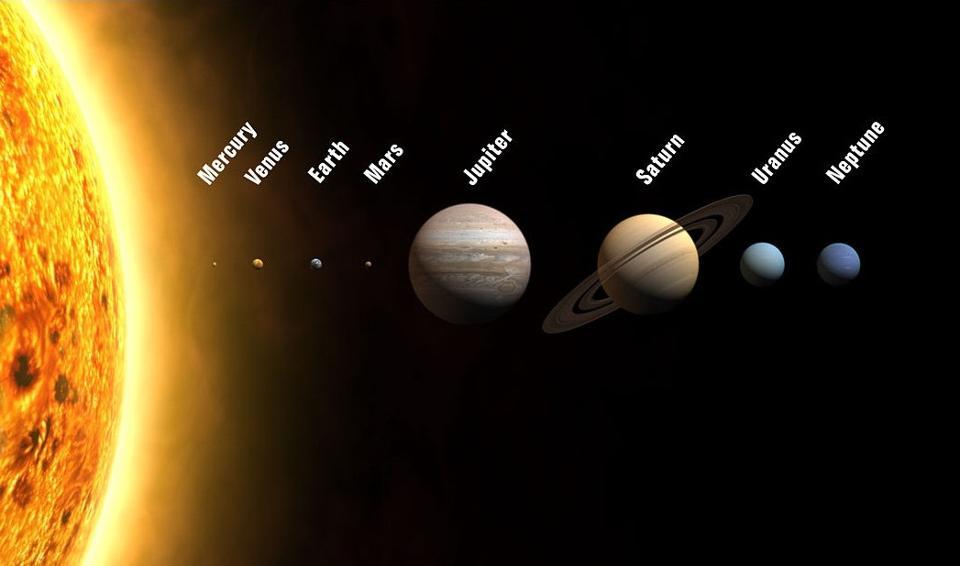 Eight planets of our Solar system and the Sun, in scale by the size of bodies, but not by the diameter of the orbits. Of all the planets visible to the naked eye, Mercury is the hardest to see.
Eight planets of our Solar system and the Sun, in scale by the size of bodies, but not by the diameter of the orbits. Of all the planets visible to the naked eye, Mercury is the hardest to see.Since ancient times, people have known five planets, or "wandering stars": Mercury, Venus, Mars, Jupiter and Saturn. Each of them moved against the background of stars from night to night, instead of remaining motionless, as did all the other glowing points. But if Venus, Mars, Jupiter and Saturn are easy to see with the naked eye, most of us have never seen Mercury. Our reader does not like this very much:
I sat on the beach, watching the sunset, and thought - how can you see Mercury with the naked eye? I know that this is possible, but how can you watch him long enough to understand that this is a “stray star”? This is the only classical planet that I have never seen!
Mercury leads by far in the list of planets that are most difficult to see with the naked eye, and for good reason.
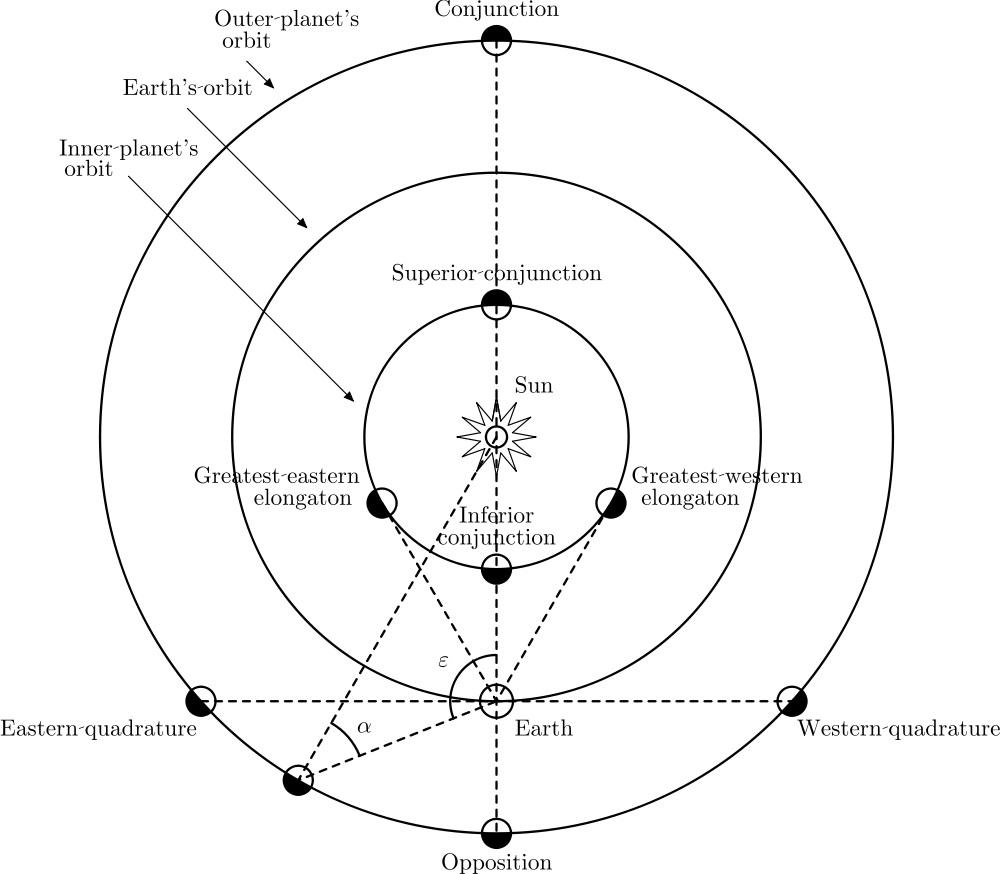 When we watch the inner planet, it never leaves the Sun too far. Due to significant differences in the size of the orbits of Mercury and the Earth, Mercury never moves away from the Sun by more than 28 degrees.
When we watch the inner planet, it never leaves the Sun too far. Due to significant differences in the size of the orbits of Mercury and the Earth, Mercury never moves away from the Sun by more than 28 degrees.Unlike other planets, Mercury never moves far from the horizon of the night sky. From the point of view of the Earth, this is because Mercury is the closest planet to the Sun. In itself, this would not be a great inconvenience; the problem is that we are located far beyond him! When Mercury is at the maximum distance (in aphelion) from the Sun, it is 70 million km from it, which is only 47% of the typical distance from the Earth to the Sun. Unfortunately, this means that even in an ideal scenario, from our point of view, Mercury leaves the Sun only 28 °.
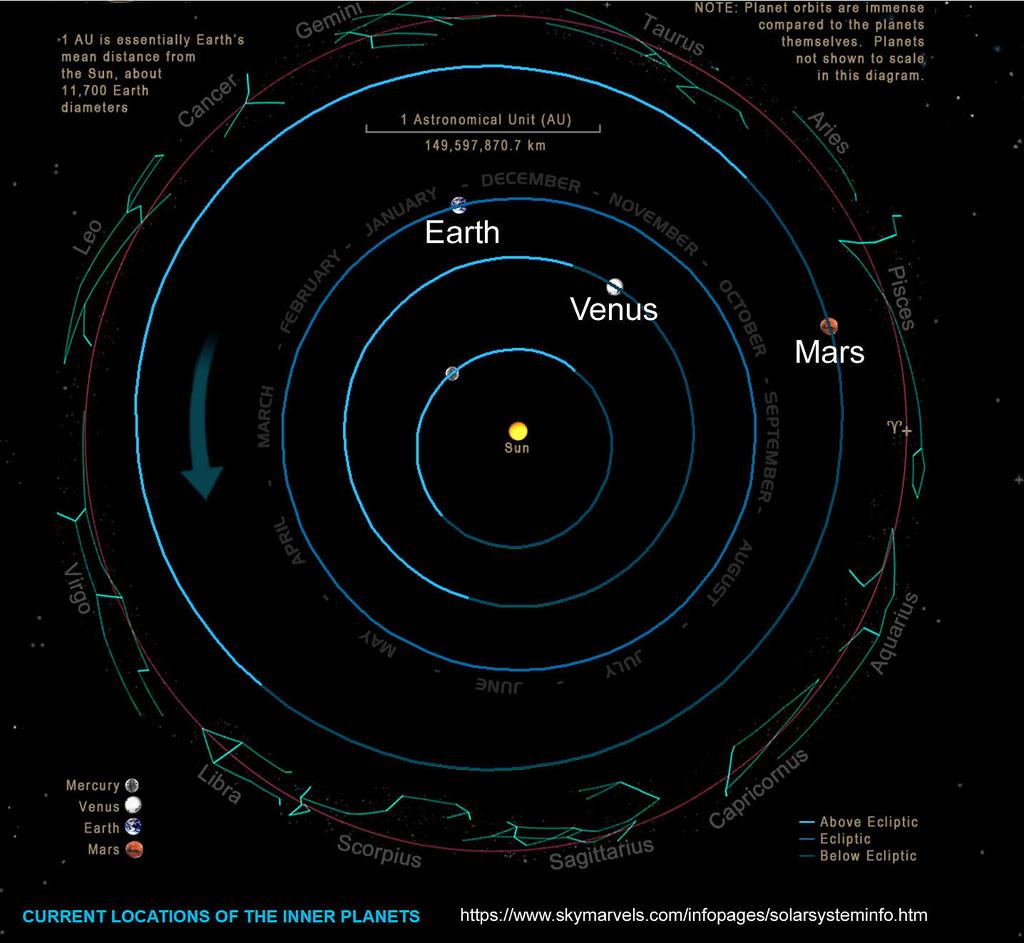 The orbits of the inner worlds of the solar system, in scale. Mercury is hard to see from Earth due to the fact that it does not move far from the Sun.
The orbits of the inner worlds of the solar system, in scale. Mercury is hard to see from Earth due to the fact that it does not move far from the Sun.But such an ideal scenario almost never happens. Mercury's orbit is elliptical, and, being at the closest distance from the Sun (at the perihelion), ideally it is only 18 ° away from it. Most of the time, naturally, he is not even in this ideal position, called maximum elongation. Most of the time, it is located even closer to the Sun, and this creates problems for professional astronomers and amateurs around the world.
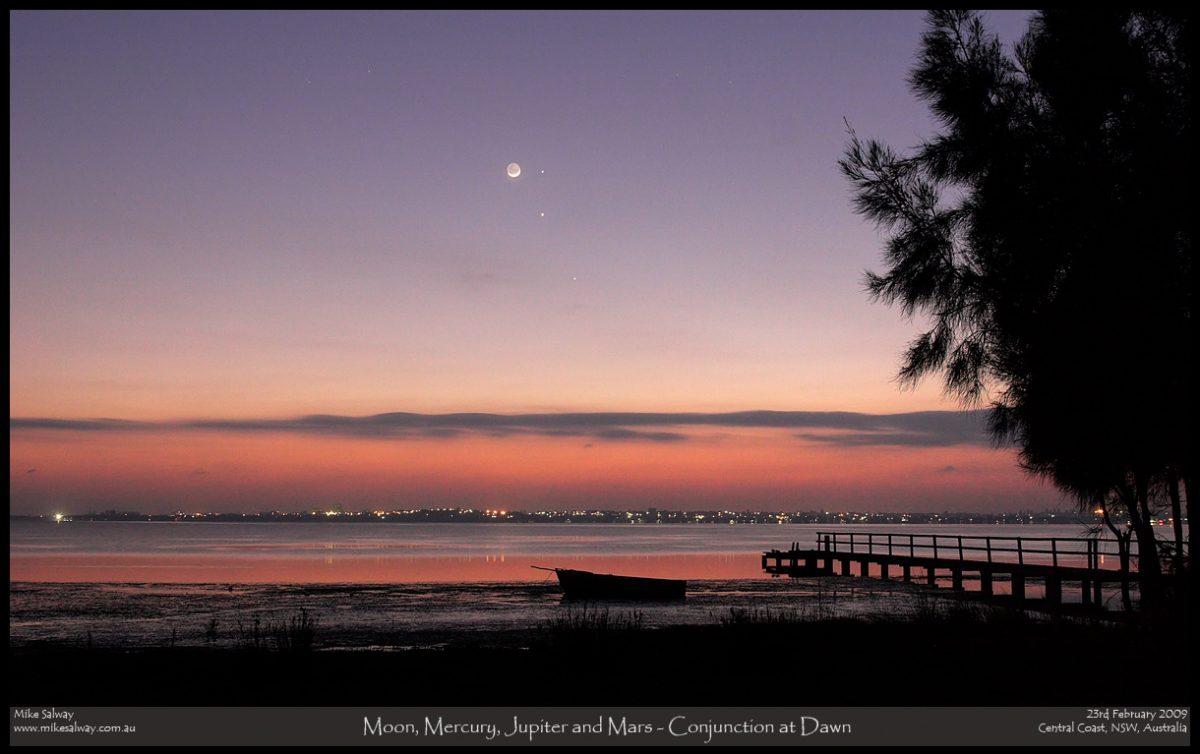 In the predawn sky of New South Wales in Australia, Mike Salway was able to photograph the Moon, Mercury (above), Jupiter and Mars. Usually Mercury is not visible due to the Sun.
In the predawn sky of New South Wales in Australia, Mike Salway was able to photograph the Moon, Mercury (above), Jupiter and Mars. Usually Mercury is not visible due to the Sun.The reason for this is very simple: during the day most astronomical objects cannot be observed. To see most of them, it is necessary that the sun goes down and the sky darkens. The sky reaches total darkness when the sun descends more than 18 ° from the horizon, but Mercury can ideally be seen only when the sun is no more than 6 ° below the horizon. During maximum elongation, Mercury looks quite bright - comparable to Canopus, the second brightest star in the whole sky. When stars appear in the sky, Mercury appears.
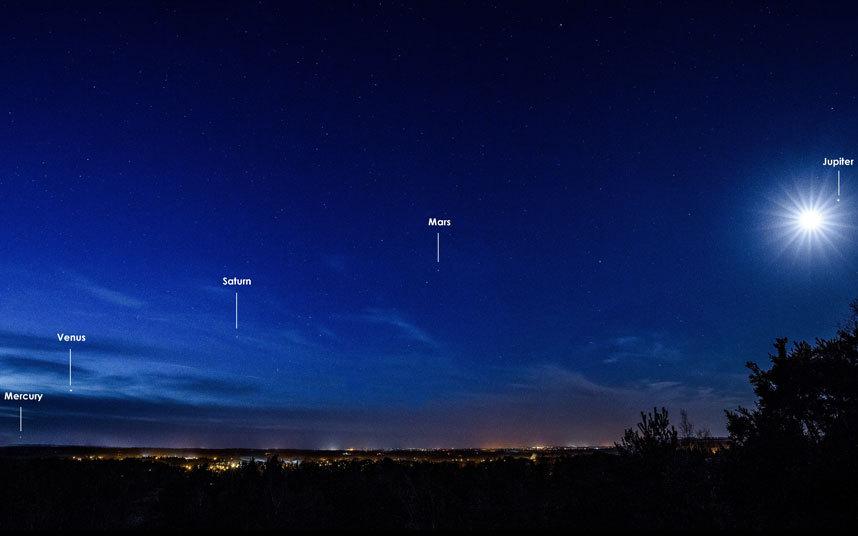 This happens only once in 11 years, but sometimes all five planets visible to the naked eye are visible together. And Mercury is always the hardest to notice.
This happens only once in 11 years, but sometimes all five planets visible to the naked eye are visible together. And Mercury is always the hardest to notice.The combination of these conditions - the proximity of Mercury to the Sun and the need for the Sun to go beyond the horizon by a few degrees - is a big problem for many people from around the world trying to see Mercury. The problem arises from the fact that Mercury, the Sun and the Earth move approximately in the same plane of the ecliptic. On Earth, the Sun does not just rise in the east, goes straight through the zenith to the west, and sets there. It moves along a curved path, and the greater your breadth, the more it affects.
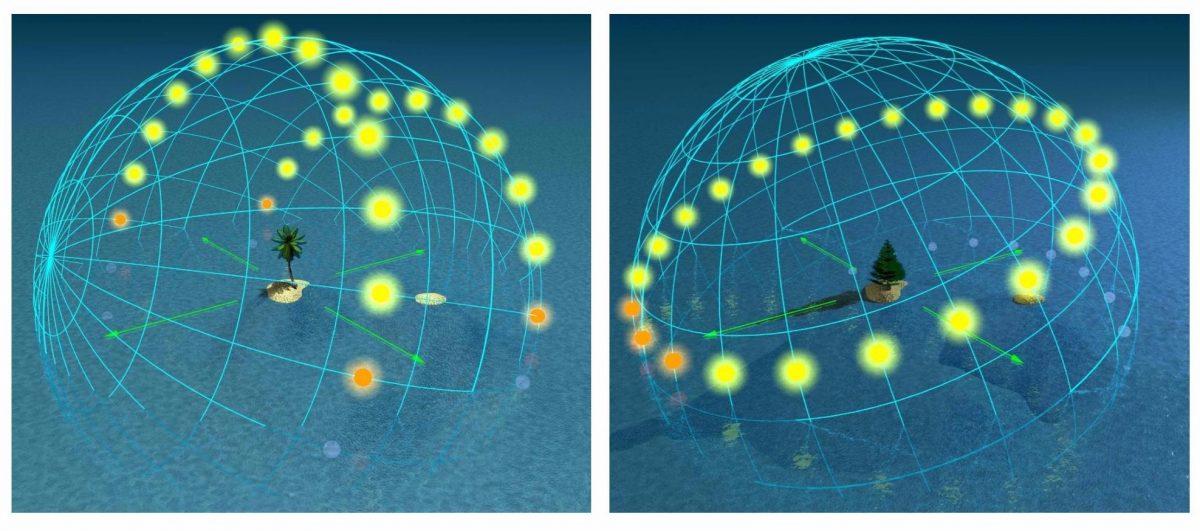 The visible path of the Sun across the sky at the time of the solstice is very different if observed from latitudes of 20 degrees (left) or 70 degrees (right)
The visible path of the Sun across the sky at the time of the solstice is very different if observed from latitudes of 20 degrees (left) or 70 degrees (right)For everyone who lives above the 45th parallel in any hemisphere [this is almost all of Russia - everything north of Krasnodar / approx. perev.], this problem is so strong that, in principle, you are not destined to see Mercury even with a clear horizon and a clear evening or morning sky. But being closer to the equator, seeing Mercury is quite simple. Those who live close enough to the equator — ideally 10-15 degrees south — could freely see Mercury in the last week of July and the first week of August 2017.
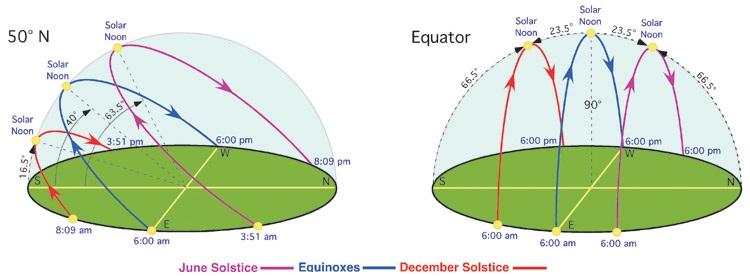 At high latitudes, the path of the sun is at a significant angle to the vertical, and near the equator the sun rises and sets almost vertically.
At high latitudes, the path of the sun is at a significant angle to the vertical, and near the equator the sun rises and sets almost vertically.Mercury reaches a maximum elongation of 27.2 ° on July 30, and at this time it can be seen in the night sky. From the southern latitudes at 10-15 °, sunrise and sunset will look almost vertical, that is, when the sun reaches 18 ° and perfect darkness sets in, Mercury will still be 9 ° above the horizon. From July 20 to August 9, it will be possible to observe the “wanderings” of Mercury and make sure that this is indeed a planet.
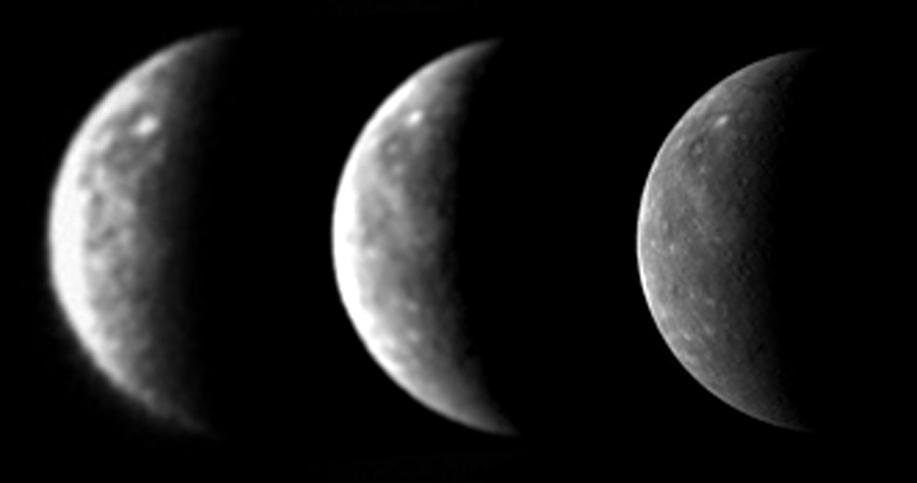 Best of all, Mercury can be seen in a large telescope, and overlaying dozens of different photos you can make a good image of it (on the left - from 1998, in the center - from 2007), or fly to Mercury and take a photo of it directly (on the right - a photo of the Messenger mission from 2009) .
Best of all, Mercury can be seen in a large telescope, and overlaying dozens of different photos you can make a good image of it (on the left - from 1998, in the center - from 2007), or fly to Mercury and take a photo of it directly (on the right - a photo of the Messenger mission from 2009) .So how do you see Mercury living closer to the poles than to the equator? For example, on August 21, a total solar eclipse could be observed on the east coast of the USA, being on the 45th parallel. Then Mercury could be seen near the Sun, and above it, further from the horizon, Mars.
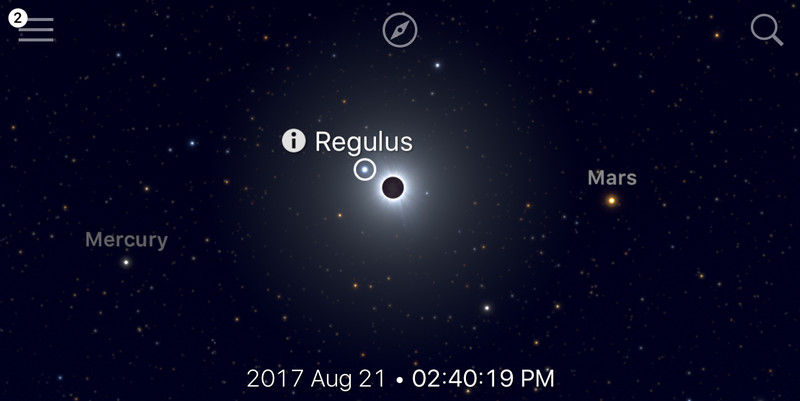 Simulation of a solar eclipse on August 21, 2017
Simulation of a solar eclipse on August 21, 2017Mercury is in such relative inaccessibility to us mainly because of the latitude we live in. How can you see something when the sun does not let the sky become dark enough until the planet you are looking for disappears behind the horizon? Sometimes it can be seen better, sometimes it is worse, but it is best to move closer to the equator, and look west after sunset, when Mercury is in maximum eastern elongation, or east before dawn, when Mercury is in maximum western elongation.
 Hubble Space Telescope
Hubble Space TelescopeThe Hubble Space Telescope is the most powerful observatory launched into orbit. From low orbit above the Earth, it can give us the best possible image of all the worlds of the Solar System that can be obtained without traveling directly to them through vast, astronomical distances. But Hubble never looked at Mercury. Its proximity to the Sun carries risks - if direct sunlight accidentally falls on the telescope's mirror, all optical systems will burn. Even with a margin of 20 °, administrators controlling the time of the telescope never allowed Hubble to be used to observe Mercury, or even Venus.
So, just coming closer to the equator at the right time, you not only can see the innermost planets of the Solar System, and watch how it wanders, you can see what is inaccessible even to the greatest space telescope of mankind.
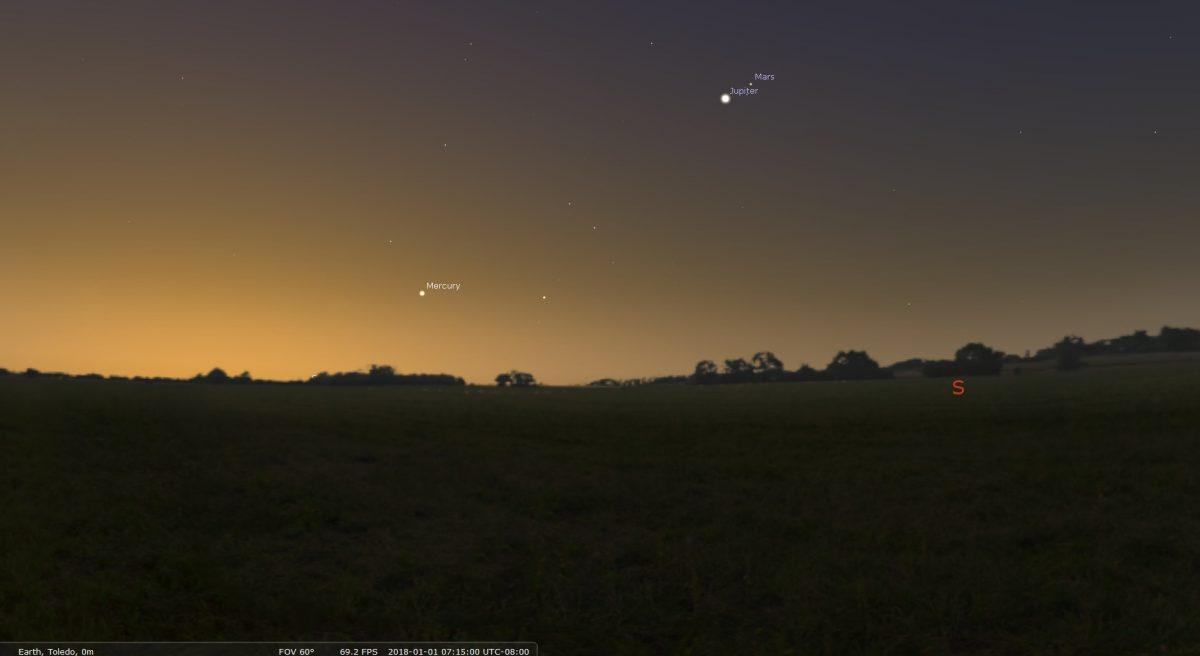 On January 1, 2018, Mercury reaches its maximum western elongation. This will be the best opportunity to see it from high northern latitudes.
On January 1, 2018, Mercury reaches its maximum western elongation. This will be the best opportunity to see it from high northern latitudes.And if you really want to see Mercury from high northern latitudes without any trips, then the best time for this will be from 7:00 to 7:15 am on January 1, 2018, just before dawn. Look to the east, where Mars and Jupiter will be close to each other, and follow the line they form down to the horizon, close to the Sun, which is about to rise. If the horizon in the east is clear, you can see a bright point between Jupiter and the horizon - this will be Mercury. But the easiest way is still to go closer to the equator.
Ethan Siegel - astrophysicist, popularizer of science, blog Starts With A Bang! He wrote the books Beyond The Galaxy , and Treknologiya: Star Trek Science [ Treknology ].